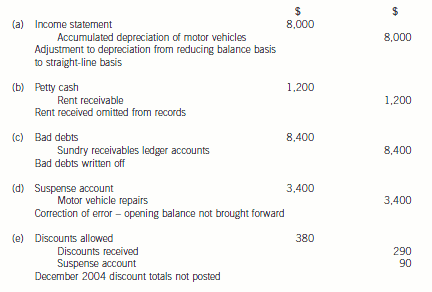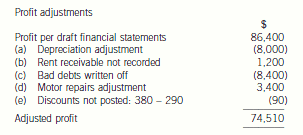ACCA2019-2020MA(F2)考试大纲,速看!
发布时间:2019-07-19
2019-2020年的考试大纲已经上线了,小编特地整理了MA(F2)科目的考纲变动细节情况给大家,具体内容如下。
一、科目关联(Relation Diagram)
Management Accounting(MA)《管理会计》课程中的相关知识首先与Performance Management(PM)《业绩管理》和Advanced
Performance Management(APM)《高级业绩管理》这两门科目中的知识有所关联。此外,还会涉及到一定的Strategic Business Leader(SBL)《战略商业报告》。
而在MA课程中学到的知识,将会运用到学员后续高阶课程的PM以APM科目的学习中。MA课程中的Part B最后一章节Alternative costing methods会出现在PM的Part A,Part E有关Performance management的部分会出现在PM以及APM课程里。
MA课程中为之后的PM课程以及高阶必修的SBR课程打下基础。而MA课程直接承接的是PM,二者紧密关联,MA培养学员基础的管理会计技巧和认知,PM以及APM则培养学员更高级、真实的业绩管理能力。所以对于后期选修对APM有兴趣的学员来说,MA更是极为重要的一门科目!
二、新课程框架和新考纲(New Framework and Syllabus)
整体变化是增加了一个版块,这个版块整合了关于Date analysis and
statistical techniques的内容,同时又新增了一些这个内容的其他知识点。
第一个变化
新增版块Data analysis and statistical techniques成为了Part B部分。但是其他版块内容不变,以此往后顺延。由原来的Part A-Part E
5个Part的内容;变成了现在Part A-Part F 6个Part的内容。
第二个变化
将原来考纲Part C Budgeting中的Statistical
techniques这个知识点放在了新考纲Part B Data analysis and
statistical techniques的Forecasting techniques中。
第三个变化
新增了一部分的知识点。一个是Big data and analysis,放在了Part A The nature,source and purpose ofmanagement information的Sources of data中;一个是Summarising
and analysing data,放在了Part B Date analysis and
statistical technique。
对于此次考纲的调整,可以看出对Date analysis and statistical
techniques进行了一个整合。内容基本不变,我们主要看的就是新增的知识点。
三、新增知识点1:Big data and analysis
考纲要求的是Describe the main uses of big data
andanalytics for organisations。那也就是需要大家知道和分析大数据在企业中的用途。考试依然最多是以选择题形式进行考察。
四、新增知识点2:Summarising and analysing data
考纲要求:
a)Calculate the mean,mode and median
forungrouped data and the mean for groupeddata.
b)Calculate measures of dispersion
including thevariance,standard deviation and coefficient ofvariation both
grouped and ungrouped data.
c)Calculate expected values for use in
decisionmaking.
d)Explain the properties of a
normaldistribution.
e)Interpret normal distribution graphs and
tables
那么要求大家掌握的就是对均值、中位数、离散度、标准差、变异系数、均值及期望值等的计算。对正太分布图,要了解它的性质并能够解读其中的含义。考试通常会以计算分析等形式进行考察。
关于考试:
五、MA课程考试形式和分值分布:
Section A是35道2分的填空选择,一共70分;Section
B是3道大题,每题10分,各来自Part C、D、E,也是填空选择的形式。
综合以上就是关于MA的考纲变化详情,希望能对各位小伙伴有用。
下面小编为大家准备了 ACCA考试 的相关考题,供大家学习参考。
2 The draft financial statements of Choctaw, a limited liability company, for the year ended 31 December 2004 showed
a profit of $86,400. The trial balance did not balance, and a suspense account with a credit balance of $3,310 was
included in the balance sheet.
In subsequent checking the following errors were found:
(a) Depreciation of motor vehicles at 25 per cent was calculated for the year ended 31 December 2004 on the
reducing balance basis, and should have been calculated on the straight-line basis at 25 per cent.
Relevant figures:
Cost of motor vehicles $120,000, net book value at 1 January 2004, $88,000
(b) Rent received from subletting part of the office accommodation $1,200 had been put into the petty cash box.
No receivable balance had been recognised when the rent fell due and no entries had been made in the petty
cash book or elsewhere for it. The petty cash float in the trial balance is the amount according to the records,
which is $1,200 less than the actual balance in the box.
(c) Bad debts totalling $8,400 are to be written off.
(d) The opening accrual on the motor repairs account of $3,400, representing repair bills due but not paid at
31 December 2003, had not been brought down at 1 January 2004.
(e) The cash discount totals for December 2004 had not been posted to the discount accounts in the nominal ledger.
The figures were:
$
Discount allowed 380
Discount received 290
After the necessary entries, the suspense account balanced.
Required:
Prepare journal entries, with narratives, to correct the errors found, and prepare a statement showing the
necessary adjustments to the profit.
(10 marks)


(b) Discuss the relative costs to the preparer and benefits to the users of financial statements of increased
disclosure of information in financial statements. (14 marks)
Quality of discussion and reasoning. (2 marks)
(b) Increased information disclosure benefits users by reducing the likelihood that they will misallocate their capital. This is
obviously a direct benefit to individual users of corporate reports. The disclosure reduces the risk of misallocation of capital
by enabling users to improve their assessments of a company’s prospects. This creates three important results.
(i) Users use information disclosed to increase their investment returns and by definition support the most profitable
companies which are likely to be those that contribute most to economic growth. Thus, an important benefit of
information disclosure is that it improves the effectiveness of the investment process.
(ii) The second result lies in the effect on the liquidity of the capital markets. A more liquid market assists the effective
allocation of capital by allowing users to reallocate their capital quickly. The degree of information asymmetry between
the buyer and seller and the degree of uncertainty of the buyer and the seller will affect the liquidity of the market as
lower asymmetry and less uncertainty will increase the number of transactions and make the market more liquid.
Disclosure will affect uncertainty and information asymmetry.
(iii) Information disclosure helps users understand the risk of a prospective investment. Without any information, the user
has no way of assessing a company’s prospects. Information disclosure helps investors predict a company’s prospects.
Getting a better understanding of the true risk could lower the price of capital for the company. It is difficult to prove
however that the average cost of capital is lowered by information disclosure, even though it is logically and practically
impossible to assess a company’s risk without relevant information. Lower capital costs promote investment, which can
stimulate productivity and economic growth.
However although increased information can benefit users, there are problems of understandability and information overload.
Information disclosure provides a degree of protection to users. The benefit is fairness to users and is part of corporate
accountability to society as a whole.
The main costs to the preparer of financial statements are as follows:
(i) the cost of developing and disseminating information,
(ii) the cost of possible litigation attributable to information disclosure,
(iii) the cost of competitive disadvantage attributable to disclosure.
The costs of developing and disseminating the information include those of gathering, creating and auditing the information.
Additional costs to the preparers include training costs, changes to systems (for example on moving to IFRS), and the more
complex and the greater the information provided, the more it will cost the company.
Although litigation costs are known to arise from information disclosure, it does not follow that all information disclosure leads
to litigation costs. Cases can arise from insufficient disclosure and misleading disclosure. Only the latter is normally prompted
by the presentation of information disclosure. Fuller disclosure could lead to lower costs of litigation as the stock market would
have more realistic expectations of the company’s prospects and the discrepancy between the valuation implicit in the market
price and the valuation based on a company’s financial statements would be lower. However, litigation costs do not
necessarily increase with the extent of the disclosure. Increased disclosure could reduce litigation costs.
Disclosure could weaken a company’s ability to generate future cash flows by aiding its competitors. The effect of disclosure
on competitiveness involves benefits as well as costs. Competitive disadvantage could be created if disclosure is made relating
to strategies, plans, (for example, planned product development, new market targeting) or information about operations (for
example, production-cost figures). There is a significant difference between the purpose of disclosure to users and
competitors. The purpose of disclosure to users is to help them to estimate the amount, timing, and certainty of future cash
flows. Competitors are not trying to predict a company’s future cash flows, and information of use in that context is not
necessarily of use in obtaining competitive advantage. Overlap between information designed to meet users’ needs and
information designed to further the purposes of a competitor is often coincidental. Every company that could suffer competitive
disadvantage from disclosure could gain competitive advantage from comparable disclosure by competitors. Published figures
are often aggregated with little use to competitors.
Companies bargain with suppliers and with customers, and information disclosure could give those parties an advantage in
negotiations. In such cases, the advantage would be a cost for the disclosing entity. However, the cost would be offset
whenever information disclosure was presented by both parties, each would receive an advantage and a disadvantage.
There are other criteria to consider such as whether the information to be disclosed is about the company. This is both a
benefit and a cost criterion. Users of corporate reports need company-specific data, and it is typically more costly to obtain
and present information about matters external to the company. Additionally, consideration must be given as to whether the
company is the best source for the information. It could be inefficient for a company to obtain or develop data that other, more
expert parties could develop and present or do develop at present.
There are many benefits to information disclosure and users have unmet information needs. It cannot be known with any
certainty what the optimal disclosure level is for companies. Some companies through voluntary disclosure may have
achieved their optimal level. There are no quantitative measures of how levels of disclosure stand with respect to optimal
levels. Standard setters have to make such estimates as best they can, guided by prudence, and by what evidence of benefits
and costs they can obtain.
6 Certain practices have developed that threaten to damage the integrity and objectivity of professional accountants and
the reputation of the accounting profession.
Required:
Explain the following practices and associated ethical risks and discuss whether current ethical guidance is
sufficient:
(a) ‘lowballing’; (5 marks)
6 CERTAIN PRACTICES
Tutorial note: The answer which follows is indicative of the range of points which might be made. Other relevant material will
be given suitable credit.
(a) ‘Lowballing’
Explanation of term
‘Lowballing’ is the ‘loss-leading’ practice in which auditors compete for clients by reducing their fees for statutory audits.
Lower audit fees are then compensated by the auditor carrying out more lucrative non-audit work (e.g. consultancy and tax
advice). Audits may even be offered for free.
Such ‘predatory pricing’ may undercut an incumbent auditor to secure an appointment into which higher price consultancy
services may be sold.
Ethical risks
There is a risk of incompetence if the non-audit work does not materialise and the lowballing firm comes under pressure to
cut corners or resort to irregular practices (e.g. the falsification of audit working papers) in order to ‘keep within budget’.
However, a lack of audit quality may only be discovered if the situation arises that the company collapses and the auditors
are charged with negligence.
If, rather than comprise the quality of the audit, an audit firm substantially increases audit fees, a fee dispute could arise. In
this case the client might refuse to pay the higher fee. It could be difficult then for the firm to take the matter to arbitration
if the client was misled. Thus an advocacy threat may arise.
Financial dependence is a direct incentive that threatens independence. A self-interest threat therefore arises when, having
secured the audit, the audit firm needs the client to retain its services in order to recoup any losses initially incurred.
The provision of many other services gives rise to a self-review threat (as well as a self-interest threat).
Sufficiency of current ethical guidance
In current ethical guidance, the fact that an accountancy firm quotes a lower fee than other tendering firms is not improper,
providing that the prospective client is not misled about:
– the precise range of services that the quoted fee is intended to cover; and
– the likely level of fees for any other work undertaken.
This is clearly insufficient to prevent the practice of lowballing.
Legal prohibitions on the provision of many non-audit services (e.g. bookkeeping, financial information systems design and
implementation, valuation services, actuarial services, internal audit (outsourced), human resource services for executive
positions, investment and legal services) should make lowballing a riskier pricing strategy. This may curb the tendency to
lowball.
Lowballing could be eliminated if, for example, auditors were required to act ‘exclusively as auditors’. Although regulatory
environments have moved towards this there is not a total prohibition on non-audit services.
声明:本文内容由互联网用户自发贡献自行上传,本网站不拥有所有权,未作人工编辑处理,也不承担相关法律责任。如果您发现有涉嫌版权的内容,欢迎发送邮件至:contact@51tk.com 进行举报,并提供相关证据,工作人员会在5个工作日内联系你,一经查实,本站将立刻删除涉嫌侵权内容。
- 2020-03-04
- 2020-02-23
- 2020-03-13
- 2020-05-03
- 2020-01-03
- 2020-03-08
- 2019-07-19
- 2020-08-05
- 2019-07-19
- 2019-12-29
- 2019-07-19
- 2020-03-13
- 2020-01-01
- 2019-07-19
- 2020-03-10
- 2019-01-05
- 2020-03-07
- 2020-03-14
- 2019-07-19
- 2019-07-19
- 2020-05-20
- 2020-05-08
- 2020-05-03
- 2019-07-19
- 2019-07-19
- 2020-01-03
- 2020-03-13
- 2020-04-19
- 2020-03-13
- 2020-03-08